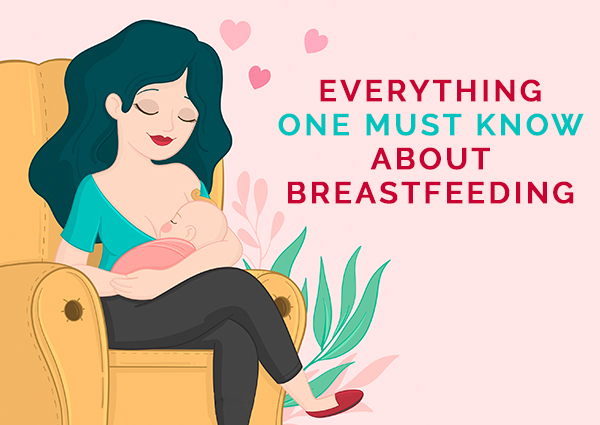Everything One Must Know About Breastfeeding
In the following we will be discussing an important topic that is “Everything one must know about Breastfeeding” and will discuss it in detail within the article:
There are few areas of motherhood—or of just being a woman—that is as politicized as breastfeeding. There is so much pressure on ladies to not solely breastfeed but to do it seamlessly, without fear or complication. But the truth is, the idea of breastfeeding is scary and confusing for a lot of women—and rightfully so. It’s something your body has never done before, it can hurt, and it can feel like your child depends on it and, on top of all of that, you have an entire society’s expectations and burden on your shoulders.
But if you have some big questions—and fears—about breastfeeding, you’re not alone. It’s intimidating. You’re allowed to feel intimidated, confused and apprehensive. Don’t feel ashamed of that. Instead, try to focus on asking the questions you want to be answered, because the more you learn, the more informed and prepared you’ll feel. Here are some frequently asked questions about breastfeeding, because it really is a whole new world.
1. How Does My Baby Latch
Latching is complicated, because for some babies it happens really naturally, while some can take longer—and others seem to just refuse. There are various techniques that women use to help assist their babies in the latching process—including the C hold, where you place your fingers under your breast and your thumb on top of your breast, more skin-to-skin contact, or even taking a shallow, warm bath with your baby. But as I said, a lot of women struggle with this, so you shouldn’t feel like you’re doing something wrong if your baby is struggling to latch—some babies just find it more foreign than others.
2. How Much and How Often
One thing that young mothers often feel confused about is how much milk they should be producing, but so to say there really is no “should.” If your baby is putting on weight, that’s the most important thing. The first few days you’ll produce colostrum—which is great for the baby—and then you should switch to producing milk. You should aim to feed your baby around every 2-3 hours during the day and every 4 hours at night, according to the American Academy of Pediatrics. As for how long the sessions should last, there’s no “right” amount of time, though some experts recommend about 10 minutes per breast.
Your baby will usually keep sucking as long as they’re hungry and then drop off. If you’re concerned about over- or under-producing, you can talk to your doctor who will help reassure you that you’re on the right track.
3. Will It Hurt
Sometimes, yes. Often you’ll experience “latching pain” at the beginning of a feeding, but it should pass after around 20 or 30 seconds. If your baby is latching improperly and you have a “shallow latch,” that can be more problematic—and lead to bruised or cracked nipples. If this happens, try to improve the latching technique or talk to your doctor because, for the most part, you shouldn’t be experiencing much discomfort.
If you feel run-down, feverish, or if there’s a pain in your breast, talk to your doctor to be sure you don’t have mastitis, an infection that can cause breast inflammation.
4. What Gear Do I Need
This varies so much from mother to mother. Many will have a breastfeeding bra designed with easy access in mind (at the very least, be sure to avoid underwire and stick with something loose and comfortable). If you go back to work, you’ll want a good pump to help you mimic your at-home feeding schedule—but even if you stay at home, a great pump can be a decent investment, helping you store up milk to keep in the freezer and also encourage milk production. A quality nipple cream or lanolin cream may also assist you to keep your nipples happy—and a nursing cover can be a lifesaver publically.
Though, as I said, some mothers will have every piece of gear under the sun, while others will stick to a more pared-back version. It’s totally right down to your means and your preferences.
5. What About Drinking
You’ve probably heard about pumping and dumping—having a few glasses of wine and then getting rid of the milk that would be contaminated by the alcohol. But not everyone is in agreement about pumping and dumping, so this is one area where it’s important to do your research, talk to your doctor, and make your own decision. Get in touch with our team for the best pediatrician in West Delhi
6. How Long Should I Breastfeed
Again, totally up to you. Some groups suggested at least a couple of months while others recommend twelve. Many mothers stop at around six months, some mothers don’t wean until the child is two or three—or even older. It’s a very personal decision, one that will depend on you and your baby.

